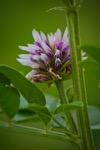Notice (8): Undefined index: geoplugin_countryCode [APP/Controller/AppController.php, line 94]Code Context$Country_code = '';if($ip_data && $ip_data['geoplugin_countryCode'] != null) {$Country_code = $ip_data['geoplugin_countryCode'];$client = null $forward = null $remote = '216.73.216.62' $ip = '216.73.216.62' $ch = unknown $ip_data_in = '{ "geoplugin_status":429, "geoplugin_message": "Blacklisted due to sending too many requests to geoplugin.net. Consider whitelisting your IP or domain", "geoplugin_url": "https://www.geoplugin.com/premium/" } ' $ip_data = [ 'geoplugin_status' => '429', 'geoplugin_message' => 'Blacklisted due to sending too many requests to geoplugin.net. Consider whitelisting your IP or domain', 'geoplugin_url' => 'https://www.geoplugin.com/premium/' ] $Country_code = ''App\Controller\AppController::initialize() - APP/Controller/AppController.php, line 94 App\Controller\ProductsController::initialize() - APP/Controller/ProductsController.php, line 31 Cake\Controller\Controller::__construct() - CORE/src/Controller/Controller.php, line 273 ReflectionClass::newInstance() - [internal], line ?? Cake\Http\ControllerFactory::create() - CORE/src/Http/ControllerFactory.php, line 47 Cake\Http\ActionDispatcher::dispatch() - CORE/src/Http/ActionDispatcher.php, line 91 Cake\Http\BaseApplication::__invoke() - CORE/src/Http/BaseApplication.php, line 235 Cake\Http\Runner::__invoke() - CORE/src/Http/Runner.php, line 65 Cake\Http\Runner::__invoke() - CORE/src/Http/Runner.php, line 65 Cake\Http\Middleware\CsrfProtectionMiddleware::__invoke() - CORE/src/Http/Middleware/CsrfProtectionMiddleware.php, line 104 Cake\Http\Runner::__invoke() - CORE/src/Http/Runner.php, line 65 Cake\Http\Runner::run() - CORE/src/Http/Runner.php, line 51 Cake\Routing\Middleware\RoutingMiddleware::__invoke() - CORE/src/Routing/Middleware/RoutingMiddleware.php, line 168 Cake\Http\Runner::__invoke() - CORE/src/Http/Runner.php, line 65 Cake\Routing\Middleware\AssetMiddleware::__invoke() - CORE/src/Routing/Middleware/AssetMiddleware.php, line 88 Cake\Http\Runner::__invoke() - CORE/src/Http/Runner.php, line 65 Cake\Error\Middleware\ErrorHandlerMiddleware::__invoke() - CORE/src/Error/Middleware/ErrorHandlerMiddleware.php, line 96
| Scientific: | Glycyrrhiza glabra |
|---|---|
| Other: | Licorice |
| Family: | Fabaceae |
Licorice (Glycyrrhiza spp.) includes numerous species native to Europe, Asia and the Americas with only a few species currently used in medicine. The Greek physician Dioscorides derived the name from glukos (sweet) and riza (root). The roots contain glycyrrhizin, a triterpenoid glycoside about 50 times sweeter than sucrose. Glycyrrhizin inhibits the breakdown of cortisol to cortisone and thus potentiating its effects. Licorice benefits people suffering from adrenal fatigue and to reduce drug withdrawal symptoms from discontinuing prednisone. However, excess use ( > 20g per day) of licorice causes " pseudo-aldosteronism " because glycyrrhizin impairs the excretion of sodium and water loss leading to hypertension as well as potassium loss.
Western herbalists recommend European licorice (Glycyrrhiza glabra) tea as a demulcent to soothe mucous membranes of the gastrointestinal (ulcers, heartburn) and respiratory tract (a cough, infections, asthma). Animal studies demonstrate that licorice contains licoflavone, a flavonoid that increases the prostaglandin PGE2 to stimulate mucus production. Deglycyrrhizinated licorice (DGL) lacks the steroid-sparing glycyrrhizin and therefore treats heartburn without the risk of hypertension.
Licorice increases mucous production in the respiratory tract to help protect inflamed airways and also dissolve phlegm making it easier to expectorate. Research demonstrates glycyrrhizin has potent antiviral activity against several types of viruses, including Influenza A, SARS, H1N1, herpes (HSV) and hepatitis.
Asian herbalists add Chinese licorice (Glycyrrhiza uralensis) to a significant number of herbal formulas to enhance the activity of other ingredients and improve the taste of decoctions. Although it possesses numerous medical properties, Chinese herbalist rarely prescribed it alone.
Endocrine
• stress
• adrenal fatigue
• adreno-corticoid insufficiency
• Addison's disease
• pancreatitis
Gastrointestinal
• inflammation of GI tract
• esophagitis
• gastroesophageal reflux disorder (GERD)
• gastritis
• laryngitis
• gastric ulcers
• apthous ulcers
Immune
• viruses
• herpes simplex virus (HSV)
• shingles
• influenza
• human immunodeficiency virus (HIV)
• severe acute respiratory syndrome (SARS)
• hepatitis (HAV, HBV, HCV)
• Epstein-Barr virus (EBV) - mononucleosis
• cancer
• leishmaniasis
Cardiovascular
• hypotension
Reproduction
• polycystic ovary syndrome (PCOS) - in combo with chinese peony
-
• infertility
• hirsutism
• menopausal hot flashes
Other
• eczema
• acne rosacea
• Adrenal Tonic
• Antiviral
• Antiulcerogenic
• Expectorant
• Demulcent
• Antitussive
• Antiinflammatory
• Hepatoprotective
• Hypertensive
• Phytoestrogen
• Triterpene Glycoside (Glycyrrhizinic Acid, Glycyrrhetinic Acid)
• Flavenoids
• Isoflavonoids
• Polysaccharides
• Tincture (1:5 in 40% EtOH): 1-3 ml tid
• Fluid extract (1:1 in 40% EtOH): 2-4 ml daily
• Decoction (dried powdered root): 0.5-1 tsp tid
• Long-term use: large amounts should not be taken for longer than 6-8 weeks.
• Pseudohyperaldosteronism • chronic use may cause symptoms of hyperaldosteronism including: hypertension, hypokalemia, weak muscles, dizziness, edema.
• Blood pressure • should be used with caution in patients with hypertension.
• Pregnancy & lactation: should be used with caution.
Note: Deglycerized licorice (DGL) does not cause affect cortisol and therefore does not cause pseudohyperaldosteronism. It can not be used to tonify the adrenals but still has a benefit for GERD, ulcers and gastritis.
Contra-indicated with the following medication that also cause hypokalemia:
• loop diuretics
• thiazide diuretics
• cardiac glycosides
• antiarrhythmic drugs
Caution in patients taking:
• stimulating laxatives (anthraquinones)
• corticosteroids
• MOA-inhibitors
Barnes J, Anderson LA, Phillipson JD. Herbal Medicines, 3rd ed. London: Pharmaceutical Press, 2007.
Bone K. Principles and Practice of Phytotherapy. Edinburgh: Churchill Livingstone, 2000.
Bone K. A Clinical Guide to Blending Liquid Herbs: Herbal Formulations for the Individual Patient. St Louis, MO: Churchill Livingstone, 2003.
Brinker F. The Toxicology of Botanical Medicines, 3rd ed. Sandy, Oregon: Eclectic Medical Publications, 2000.
Felter HW, Lloyd JU. King's American Dispensatory. 1898. http://www.ibiblio.org/herbmed/eclectic/kings/main.html. Accessed: August 19, 2006.
Hoffman D. Medical Herbalism. Rochester, Vermont: Healing Arts Press, 2003.
Weiss RF. Herbal Medicine. Beaconsfield, England: Beaconsfield Publishers Ltd, 1988.
Williamson EM, ed. Major Herbs of Ayurveda. Edinburgh: Churchill Livingstone, 2002
Disclaimer: This content is subject to change. The information is intended to inform and educate; it does not replace the medical evaluation, advice, diagnosis or treatment by a healthcare professional. www.nhpassist.com © 2014 NDAssist Inc. and/or its affiliates. All rights reserved.

|
Licorice
SummaryLicorice (Glycyrrhiza spp.) includes numerous species native to Europe, Asia and the Americas with only a few species currently used in medicine. The Greek physician Dioscorides derived the name from glukos (sweet) and riza (root). The roots contain glycyrrhizin, a triterpenoid glycoside about 50 times sweeter than sucrose. Glycyrrhizin inhibits the breakdown of cortisol to cortisone and thus potentiating its effects. Licorice benefits people suffering from adrenal fatigue and to reduce drug withdrawal symptoms from discontinuing prednisone. However, excess use ( > 20g per day) of licorice causes " pseudo-aldosteronism " because glycyrrhizin impairs the excretion of sodium and water loss leading to hypertension as well as potassium loss. IndicationsSign in requiredActionsSign in requiredConstituentsSign in requiredPosologySign in requiredSafetySign in requiredInteractionsSign in requiredReferencesSign in required |
|---|